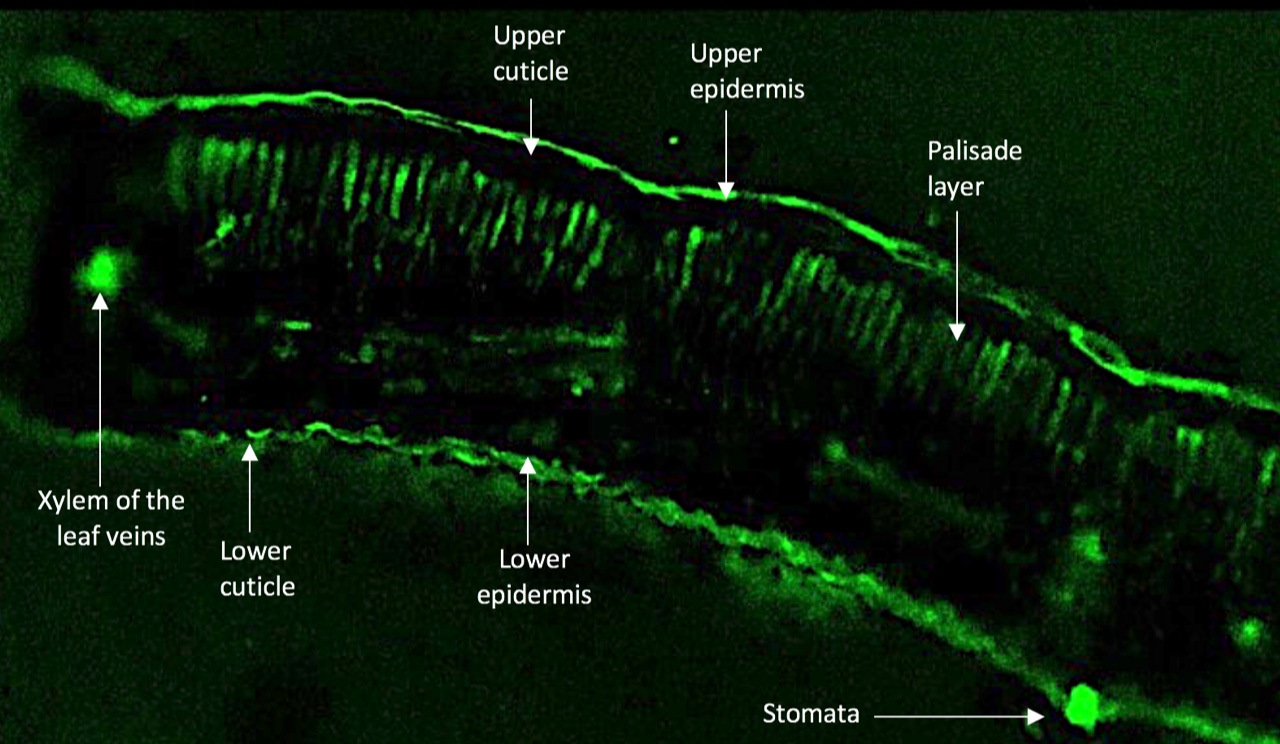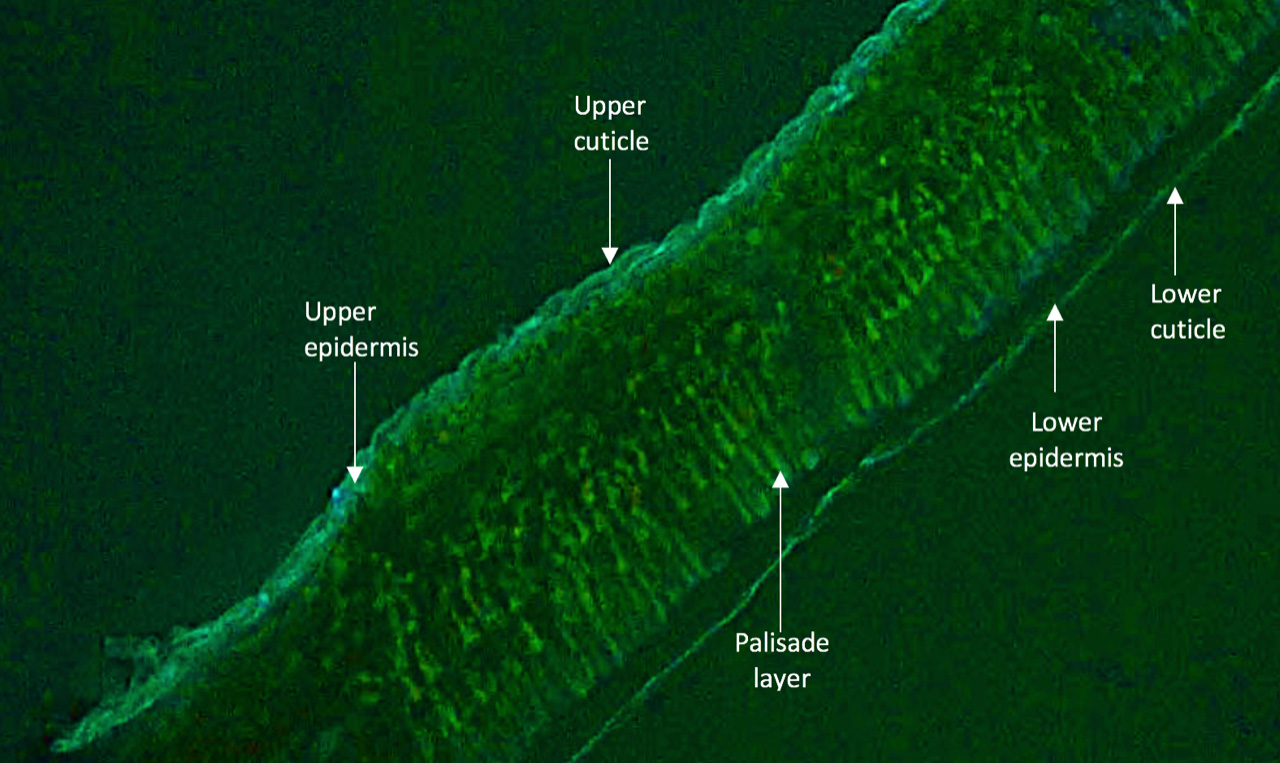Horticultural crop diseases
Strawberry Powdery Mildew - Podosphaera aphanis
Current research focus on strawberry powdery mildew Podosphaera aphanis (Figure 1), the most feared of strawberry diseases. The research aim is to devise a sustainable and integrated disease control programme.
Strawberry production in the UK is intensive, with yield doubled per hectare since the introduction in the use of polythene tunnels and fertigation in the 1990s. The environmental conditions under polytunnels favour strawberry production but are also favourable to the development of strawberry powdery mildew. This disease can cause 20-70% yield loss where a 20% yield loss in 2016 was worth £56.8 million. Growers apply fungicides weekly for 5-6 months to control this disease.
The group is led by Dr Avice M Hall, the overall research aim is to produce an integrated disease control plan which can contribute to sustainable strawberry production. Our research areas are
i) The development of a real-time prediction system
A decision support system (DSS) has been developed to support the grower for the intelligent use of fungicides, spraying only when conditions (temperature >15.5°C and <30°C, relative humidity >60%) are favourable for the development of strawberry powdery mildew. Find out more here (PDF - 0.75 Mb).
In 2019 the final on-farm validation (delivered via Agri-tech Services, funded by Ceres) took place on 8 commercial sites in England and Scotland. Results from this validation have shown that the use of the prediction system gave commercially satisfactory disease control with fewer fungicide sprays and financial savings (£100-£400/ha).
The prediction system was licensed and released in May 2020, and is now available to purchase from Agri-tech Services The system is in use in the U.K., and is being trialed in the other countries.
ii) The use of a silicon nutrient in fertigation increased resilience through enhancing the passive defence pathway of the treated plants
All plants contain silicon. Work on commercial farms since 2008 has shown that silicon plays an important role in enhancing the resilience of strawberries against strawberry powdery mildew (i.e. delays epidemic development by 12 to over 20 days depending on season and cultivar) and two-spotted spider mites. This is attributed to the regular deposition of silicon in the leaves, leaf petioles and roots of strawberry plants which enhances the natural features of the plant’s passive defence pathway (Wax, cuticle, epidermis, palisade layer, xylem of leaf veins and stomata).
Fluorescence images of silicon deposition in strawberry leaves
All plants contain some silicon (e.g. in leaf hairs) but when bioavailable silicon is given as a nutrient via the roots, it is taken up by the plant and transported to the leaves in the xylem. Silicon is then deposited in the cuticle, and the cells of the epidermis, palisade layer, xylem and stomata. Figures 1 and 2 show cross sections of silicon treated and untreated strawberry leaves. Note that the silicon is laid down evenly in the cells of treated plants. This increases pest and disease resilience by enhancing aspects of the passive defence pathway.
Quantification analysis using the ImageJ multidimensional imaging software (ImageJ v 1.52u) revealed that the integrated densities of fluorescence deposits in the silicon treated leaf section (Figure 1) was higher (7.9cps) compared with the untreated leaf section (2.2cps) as shown in Figure 2. Fluorescence intensity measurements were recorded in counts per second (Cps) arbitrary units respectively.
 | 
|
| Figure 1. Cross section of a strawberry leaf from a plant treated with silicon nutrient via the roots. The section has then been stained with LysoTracker Yellow HCK-123 which interacts with silicon particles and fluoresces when viewed under the GXML3201 fluorescence microscope (x40). Note the staining in the cuticle, epidermal and palisade cells. (Asiana, 2020). | Figure 2. Cross section of an untreated strawberry leaf (control, deionised water applied via roots). The section was then stained with LysoTracker Yellow HCK-123 dye and viewed under the GXML3201 fluorescence microscope (x40). Note that there is very little fluorescence as there is very little silicon deposited in this untreated leaf (Asiana, 2020) |
Work has further shown that the beneficial effects of silicon in the stimulation of plant growth parameters is seen mainly at different stages of the life cycle of the strawberry crop such as in the production of leaves, runners and fruit. Ongoing research has also revealed that silicon could contribute to the increase of leaf chlorophyll, fruit °Brix and pollen viability in strawberries.
Research activities
We work closely with UK strawberry growers and the ultimate goal of our research is to develop an integrated crop protection plan that benefit growers with financial savings and a reduction of environmental impacts. Our work has also been reported on a number of grower-facing news journals. A list of our research activities may be found below:
- Research from 2004-2008 (HDC SF62 and 62a) led to the publication of AHDB Factsheet 29/16: Control of strawberry powdery mildew under protection, which is available to all strawberry growers;
- The work of the prediction system is partly of the AHDB project SF157 (2015-April 2020) Improving integrated disease management in strawberry
- Two growers’ workshops were run in both 2018 (funded by the Felix Thornley Cobbold Agricultural Trust) and 2019 (funded by Ceres) in England and Scotland. The workshops were well received by growers and follow-up articles were published in ‘The Fruit Grower’
- Our work was reported in The Fruit Grower: June 2020, November 2019, August 2019,September 2018, Nov 2014 and Berry Yearbook & Buyers Guide 2020
- Attendance of annul ‘Fruit focus’ event, disseminating the research outcomes to commercial growers
- Dr Avice Hall as a speaker at the 7th and 8th International Strawberry Symposium in 2012 and 2016, the 59th Annual Horticulture Growers’ Short Course in Canada in 2017 and CPNB 2020 Environmental Management & Crop Production in Dundee in February 2020
- Carmilla Asiana won the poster prize at the Berry Gardens Annual Technical Conference, November 2017 for the best for its clarity, design and technical content, ‘An investigation into a silicon localisation in strawberry plants linked to reduced disease susceptibility to Podosphaera aphanis’
Research collaborations
- H & H Duncalfe, Maltmas Farm (commercial strawberry growers)
- Omex
- Orion Future Technology
- Agritech Services